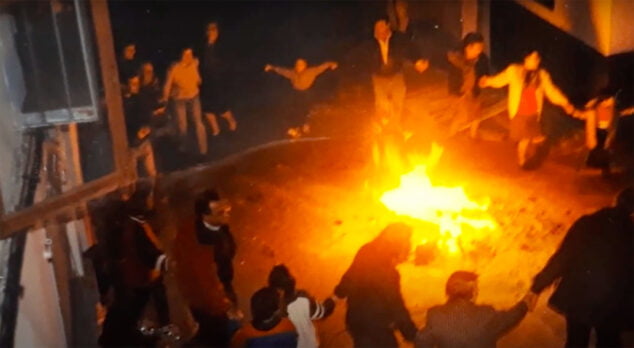The history of Dénia and Sant Antoni: a devotion that fights against oblivion
El Archivo Municipal de Dénia ha publicado en su canal de YouTube el audiovisual «Els gojos de Sant Antoni», realizado por Marina Crespo, con el apoyo de la Concejalía de Cultura.
Coinciding with the saint's festivity, which would have been celebrated next Sunday, January 16, with the traditional blessing of animals (postponed in Dénia due to the pandemic), the Archive wanted to make this work available to the public on January 31. October 2021 was projected for the neighborhood on Calle Sant Antoni.
Historical notes on gojos in Sant Antoni
With the arrival of cold weather, every January, the festival of Sant Antoni Abad or Sant Antoni del Porquet is celebrated with the blessing of domestic animals. Founder of monasteries, with an ideal life of penitence and prayer, Saint Anthony and his monks were especially associated with the pig because with the fat of the animal they treated the "fire of Saint Anthony" or "fire of hell", a disease caused by a parasitic fire, ergot, that grew in bran bread.
The history of Els gojos de Sant Antoni, sung by the residents of the street of the same name in Dénia, has a well-documented tradition. Twenty years ago, a study published by the Archives, by the archivist Rosa Seser and the musician Josep Sendra, recorded that the gojos of Sant Antoni street began to be sung around 1930, when a grateful resident of the street , in the saint, placed a ceramic panel with the image on the facade of his house.
From that moment the neighbors celebrated the ninth to the saint and for nine days they sang els gojos every afternoon in front of the panel.
The tradition will endure, still very much alive, in 2000, when the study was published, but over the years it has been lost and the spirit of recovery is what has prompted Marina Crespo, linked to the street, to make an audiovisual that puts manifesting the sense of community and the values of neighborhood coexistence and collective celebration that traditions contribute.
The devotion in Dénia for San Antonio Abad is one of the oldest. At the end of the XNUMXth century, the hermit Caterina Bas, known as Sister Basota, obtained a license to build a hermitage on top of the Montgó, in the place we all know as Cabo de San Antonio.
Throughout the fifteenth century the hermitage was maintained with income from the king's estate and donations. In the XNUMXth century, the Marquis of Dénia, Don Bernardo, grants him the income from the Real game.
En los siglos XVII y XVIII en Dénia continuaba muy viva la devoción a Sant Antoni de la Muntanya, como era conocida la ermita. Los «mayordomos» se encargaban de pagar la fiesta. Algunos fueron muy generosos, como Joan Antoni Gavilà, que puso una campana nueva en 1785, o Domingo Llorens, que pintó la iglesia.
The City Council of Dénia was in charge of the hermitage and appointed the hermit who worked the surrounding lands there.
At the beginning of the XNUMXth century, the hermitage and the land were abandoned. The devotion to Dénia continued and as a concrete manifestation the acts of the neighborhood of Sant Antoni street began.
